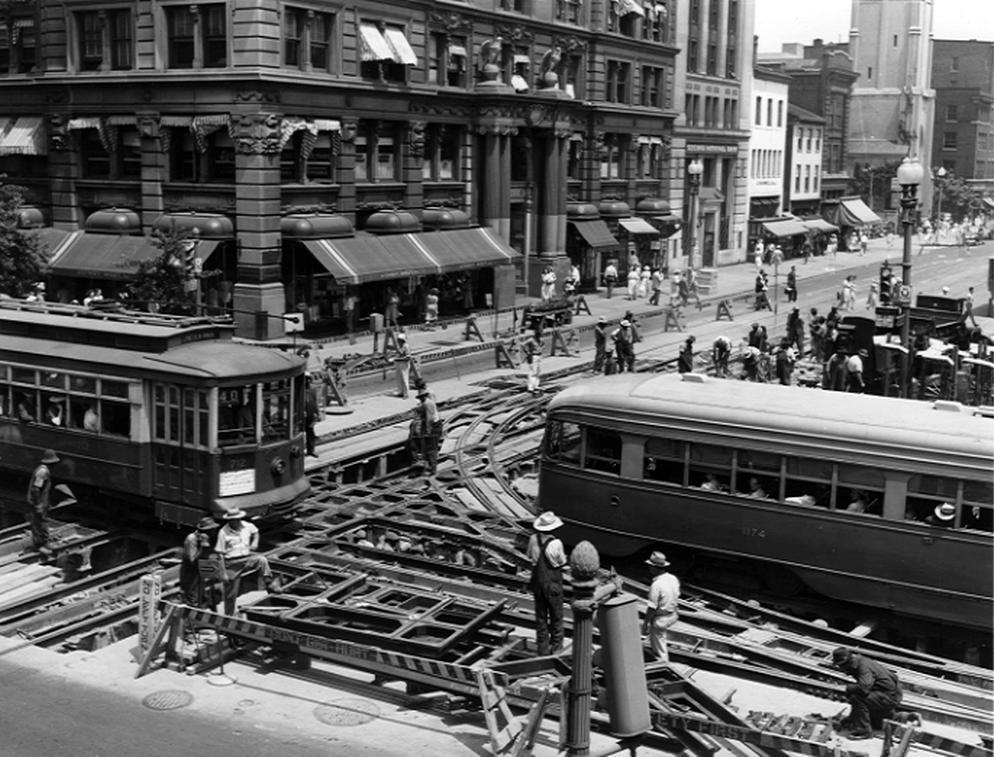The Real Costs
Why is public transit more expensive than it used to be?
by Glen Bottoms
Rail transit’s great enemy isn’t public support or political will but its enormous price tag.
The expense of heavy-rail subway systems has limited recent growth to extensions of existing lines. The last heavy-rail construction completed in the U.S. was a 3.2 mile extension of Washington Metro’s blue line to Largo Town Center, completed in 2004 at a cost of $695 million ($217 million/mile). Phase I of the Metro’s 11.6 mile extension to Dulles Airport is estimated at a staggering $2.65 billion ($242.1 million/mile). The bite for New York City subway extensions is in another reality.
At first, Light Rail seemed to offer a solution, but its cost is steadily rising. The initial segment of Seattle’s 15.6 mile Central Link Light Rail system, which opened in 2009, cost $2.4 billion ($154 million/mile). Portland, Oregon’s proposed 7.3 mile MAX Light Rail extension to Milwaukie is estimated at $1.4 billion ($191.8 million/mile).
Now that streetcars have caught on in many U.S. cities—over 60 are currently planning streetcar projects—many fear that the cost-escalation virus could infect this mode as well. The price tag on Tucson’s streetcar project, now under construction, has grown by 20 percent. Costs for proposed streetcar projects across the country range from a reasonable $10 million to an eye-popping $60 million per mile.
 What accounts for this dramatic escalation? Three key factors: 1) overdesign, 2) lack of technical expertise at the overseeing transit agency, and 3) external factors like political interference and rising material costs.
What accounts for this dramatic escalation? Three key factors: 1) overdesign, 2) lack of technical expertise at the overseeing transit agency, and 3) external factors like political interference and rising material costs.
Consultants retained to design these systems regularly use plans that they already possess without regard to applicability or functionality, selecting higher-speed overhead wire in rail yards and city streets or specifying certain types of rail without regard for cheaper alternatives. Excessive tunneling is also a critical cost driver. Tucking Light Rail in subways to avoid disturbing traffic not only raises costs, it ignores the fact that dedicating lanes to cost-effective transit increases use. The technical knowledge to recognize these inappropriate designs is a critical element of cost control.
Supervisors often cite rising prices of construction components worldwide as the reason for transit projects’ blown budgets. But this is not a major part of the story. Consider the case of Norfolk, Virginia’s 7.4 mile Light Rail project, which suffered dramatic overruns as it was being built. One report indicated that 50 percent of the increase could be attributed to “soft” costs caused by poor management decisions, like the arrival of vehicles in a storage yard that hadn’t been built yet.
America’s rail infrastructure won’t be resurrected overnight. But history shows that we can build rail economically and on time. After all, we have been constructing systems of all sizes and complexities in this country for well over a hundred years. Recalling those past experiences today will give us the tools we need to build the trains of tomorrow.
Glen Bottoms is a former longtime Federal Transit Administration employee. He now serves as executive director of the American Conservative Center for Public Transportation.
Keep America Moving: A Special Symposium on Transit
Rail Against the Machine | William S. Lind on Federal Highway Funding
Engine of Prosperity | Christopher B. Leinberger on public-private partnership
Urban Outfitters | John Norquist explains why the right can’t give up on cities
Bringing Back Downtown | John Robert Smith says there is life left in America’s Main Streets

Comments